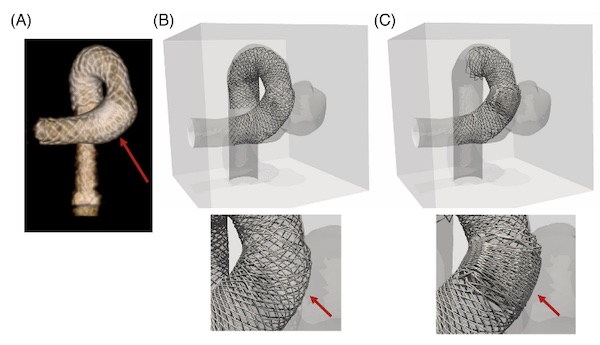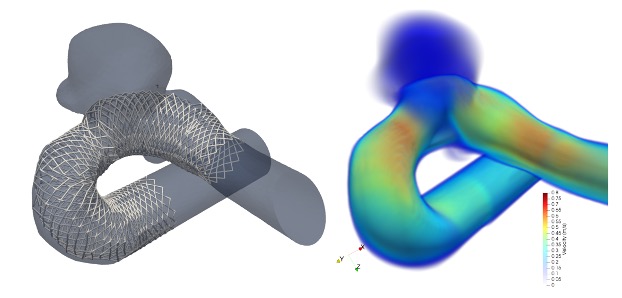Virtual stenting
Virtual treatment planning of flow diverters


Virtual flow diverter deployment techniques underwent significant develop-ment during the last couple of years. Each existing technique displays advanta-geous features, as well as significant limitations. One common drawback is thelack of quantitative validation of the mechanics of the device. In the followingwork, we present a new spring-mass-based method with validated mechanicalresponses that combines many of the useful capabilities of previous tech-niques. The structure of the virtual braids naturally incorporates the axiallength changes as a function of the local expansion diameter. The forceresponse of the model was calibrated using the measured response of real FDs.The mechanics of the model allows to replicate the expansion process duringdeployment, including additional effects such as the push-pull technique thatis required for the deployment of braided FDs to achieve full opening andproper wall apposition.
References
2020
- Hydrodynamic resistance of intracranial flow-diverter stents: measurement description and data evaluationCardiovascular engineering and technology, 2020
- A novel virtual flow diverter implantation method with realistic deployment mechanics and validated force responseInternational Journal for Numerical Methods in Biomedical Engineering, 2020